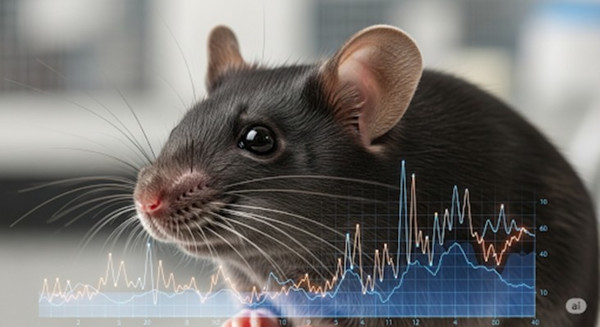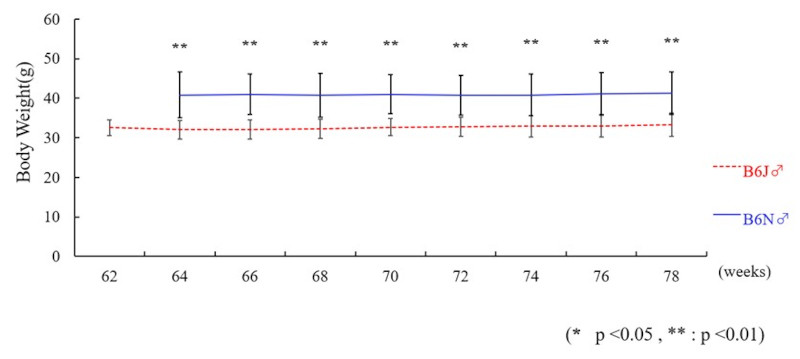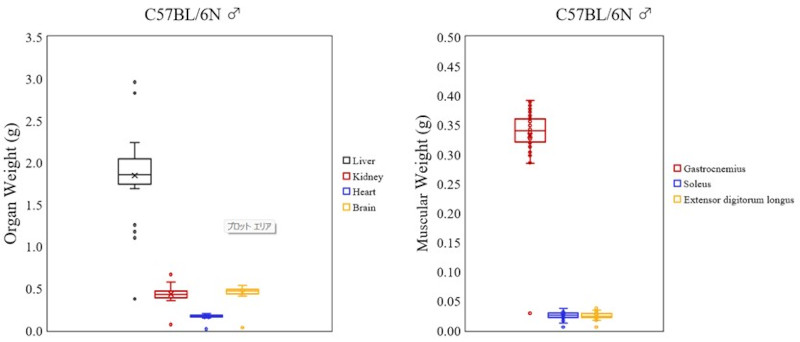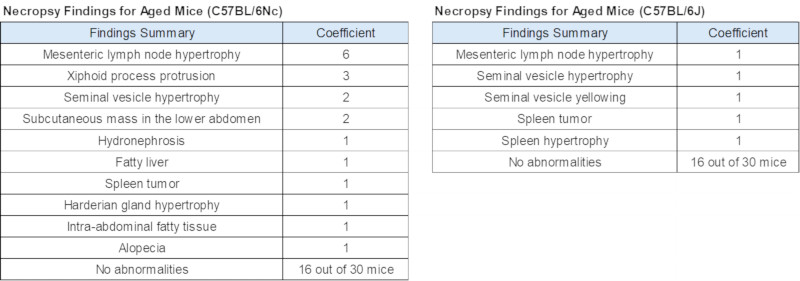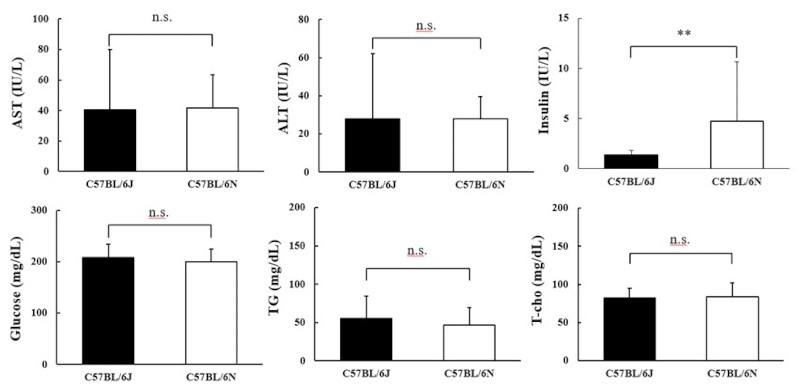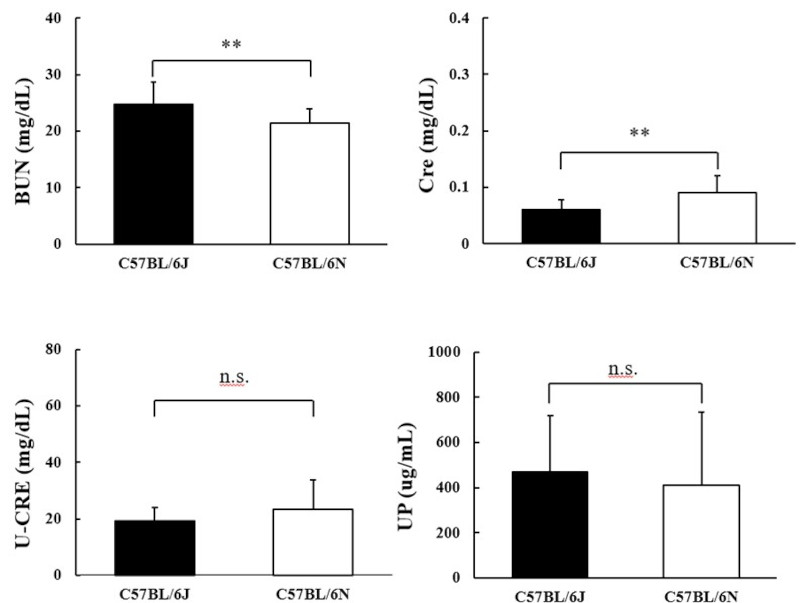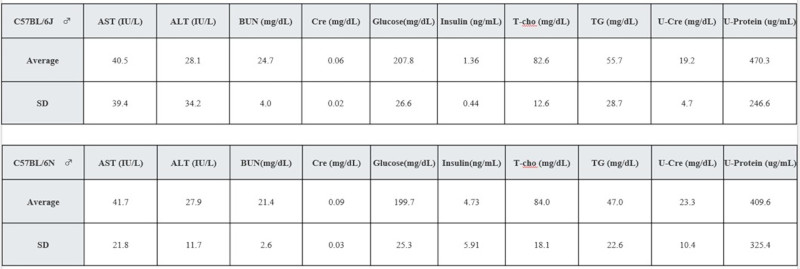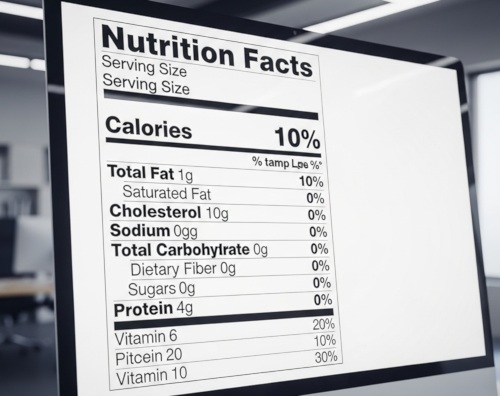Study Overview
This study was conducted to collect and publish basic physiological data from aged C57BL/6JJcl (B6J) and C57BL/6NJcl (B6N) mice during their geriatric phase (62-78 or 64-78 weeks of age), intended as a reference for aging research.
By providing essential background information for research planning and model animal selection, this data contributes to advancing research on age-related diseases.

